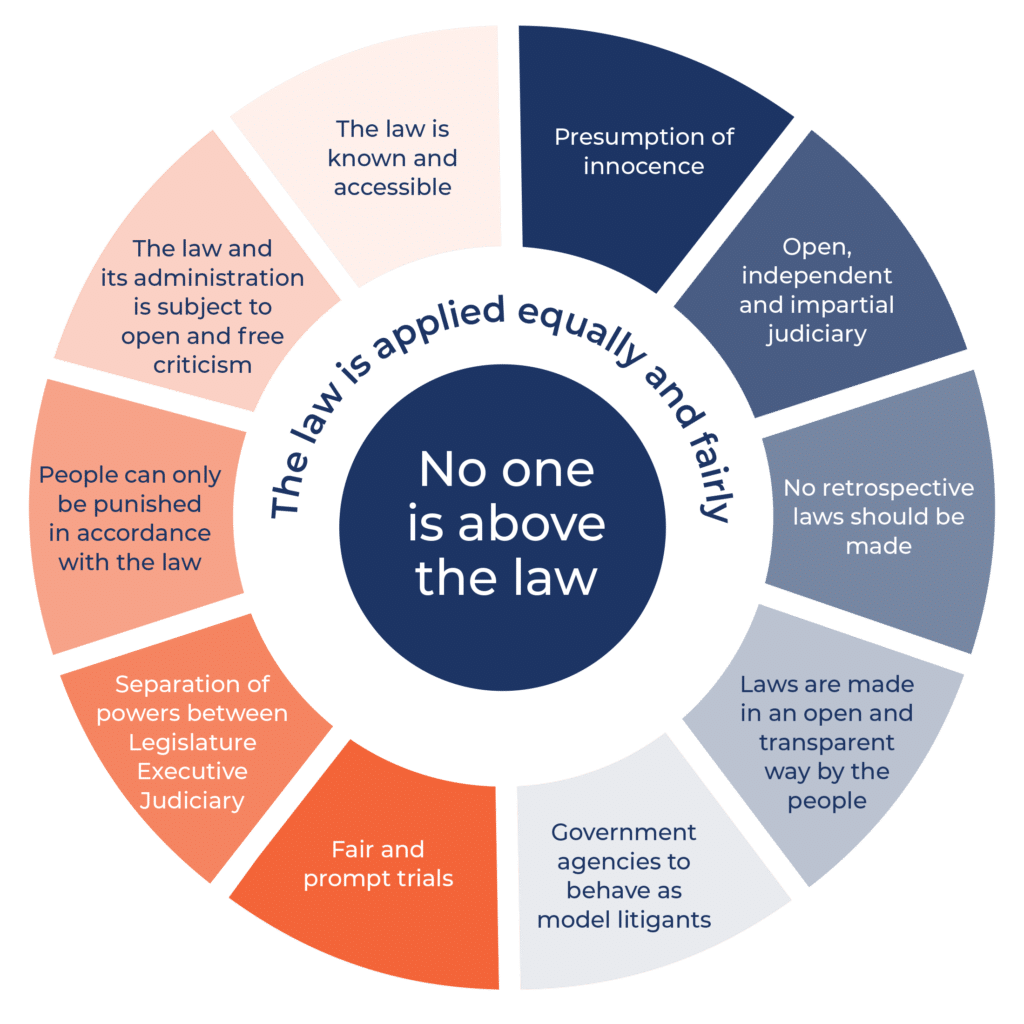Crime rates in Australia
The Australian Bureau of Statistics (ABS) recently released the results of its seventh Crime Victimisation Survey, covering people’s experiences of personal and household crimes across the nation in 2014-15.
The results of the report are mainly good news for Australians.
Not only do physical assaults continue to decline, as they have done since the report started in 2008-09, but so do household crimes, like malicious property damage, break-ins, attempted break-ins, motor vehicle thefts, and thefts of items in motor vehicles.
In addition, the overwhelming majority of households that experienced household crimes experienced only one incident, rather than suffering repeated crimes.
All of this suggests that Australia is becoming a safer place to live.
Law and order and the rule of law
While “law and order” politics is more likely to be criticised than championed by rule of law organisations, it is important to remember that, across the world, the maintenance of order and security remains a key indicator of whether a society is governed by the rule of law.
After all, it is not for nothing that the first indicator on the United Nations’ Rule of Law Indicators list is “police control of crime”.
A country may have an independent and professional judiciary, a democratic government, strong procedural safeguards in courts, strong rights protections, or any other principle associated with the rule of law; but if it cannot assure the safety and security of its people, it is unlikely to be a country where the rule of law is strong.
The reason is simple: in a country with little or no police control of crime, there are only a couple of ways it can work out.
Either the society turns to vigilante justice, indicating a loss of public confidence in government institutions, and undermining the integrity of the justice system.
Or, crime begins to dominate the society, and the weak and vulnerable become pawns in the hands of the strong. Criminal patronage networks spread through public institutions, and justice becomes a commodity to be bought and sold.
Neither outcome is conducive to the rule of law.
Australia is in the happy position of being relatively safe and secure, and, according to the ABS’ statistics, becoming increasingly safe and secure with each passing year.
Nevertheless, there remain areas of concern.
Violence against women
Notably, sexual assault rates are not showing signs of the same decline as physical assaults or household crimes. According to the ABS, nearly 60,000 Australians aged 18 and over experienced a sexual assault in 2014-15. Females were more likely to be victims than males.
In addition, of the estimated 400,000 Australians who experienced a physical assault in 2014-15, the most common location of the incident for males was their place of work, while the most common location of the incident for females was their home. In nearly three-quarters of physical assaults on females, the offender was a male, and in nearly one-third of them, the offender was the female’s intimate partner.
These statistics suggest that Australia continues to experience problems with violence – physical and sexual – against women.
While this is primarily an issue of fundamental human rights – the safety and security of women – it also raises rule of law implications.
A key principle of the rule of law is equality before the law: like cases should be treated alike, and if differential treatment of particular groups is going to occur, that difference must be appropriately linked to the characteristics of those particular groups.
The continuing overexposure of women to physical and sexual violence indicates abject inequality.
This inequality does not have to be the result of a particular person’s, or group’s, malicious intent or desire, for it to be important and destructive; governments around Australia, and, in particular, their police forces, are becoming better at understanding and responding to violence against women.
Nevertheless, the ABS’ report suggests that there is still a long way for Australia to go.
Incarceration rates
The second issue of concern is that incarceration rates in Australia continue to rise, despite the decline in crime rates.
In particular, the number of Indigenous prisoners continues to rise, and Indigenous people are now 13 times more likely to be imprisoned than non-Indigenous people.
This indicates that governments around Australia continue to pursue policies designed to increase, or which have the effect of increasing, the number of offences for which prison sentences must be imposed, and the length of the sentence imposed.
This continues to occur despite the repeated calls from civil society – including from the Rule of Law Institute – to change approach, and pursue policies that are more in tune with rule of law principles, and more likely to rehabilitate offenders and prevent them re-offending.
One of the key principles of the rule of law – and of an effective legal system – is that the punishment must fit the crime. Justice is different in every case, and the increasingly prescriptive and harsh approach of governments around Australia risks undermining that key principle, and disassociating punishment from the facts of a particular situation.
In a legal system, one size definitely does not fit all.
Conclusion
The results of the ABS crime victimisation report are mainly good news, but there remain particular areas of concern.
A society governed by the rule of law must continue to pursue policies that ensure the safety and security of every person in that society, and which promote and uphold rule of law principles.
Further reading
‘Crime Victimisation, Australia, 2014-15‘, Australian Bureau of Statistics
‘Prisoners in Australia, 2015‘, Australian Bureau of Statistics
‘Prisons trap our money along with crooks‘, SMH, Ross Gittins



